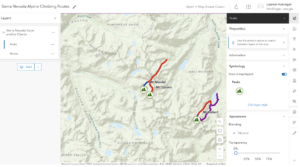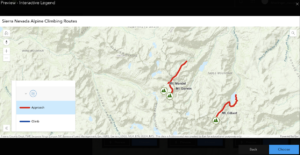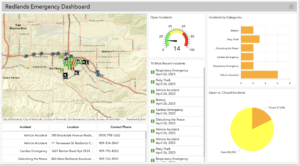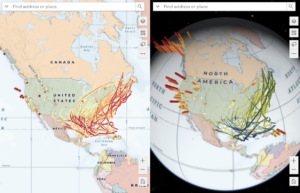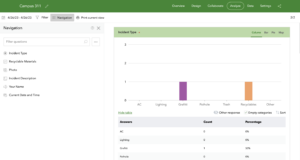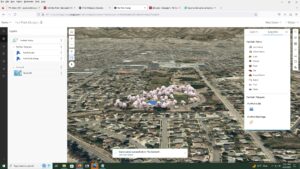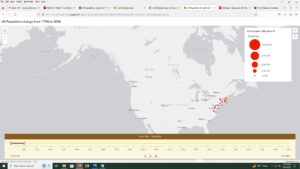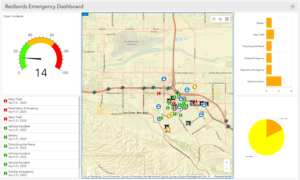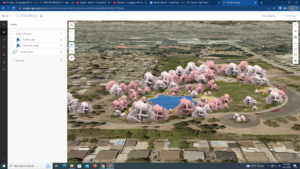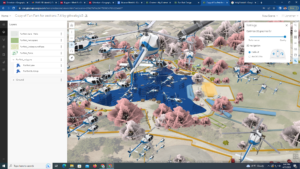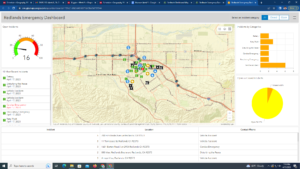Chapter 1 Notes, Comments, and Questions:
-
- Several different sharing levels
- Content types:
- Data: csv, shapefiles, geodatabases, etc.
- Layers: feature layers, vector layers, scene layers, etc.
- Web Maps and Scenes: maps are 2D, scenes are 3D
- Tools: analytical and processing functions
- Apps: mobile, brower, or desktop (provided or you can create your own)
- Apps come in bundles: user type determines which you can access
- Hosted vs. Nonhosted Feature Layers
- Hosted: web service based on Arc Managed data (ex: stored in Arc Cloud database)
- Non: connects directly to user-managed data
- Workflow to build web apps: data sources, desktop tools, ArcOnline/ArcEnterprise, Client Apps
- Data can include attachments (attachment viewer app template)
- I think one of my applications from week one included some version or similar feature to this template
- Details Page Tabs:
- Overview: basic metadata info
- Data: attribute data of hosted feature layers
- Visualization: change default properties (styles, filter, etc.)
- Usage: see usage stats over time
- Settings: enable editing and other related options
Chapter 2 Notes, Comments, Questions
- Feature Layers: most common operational layer
- Layer types: Hosted, Hosted Web Feature Service (WFS), Hosted Tile, Hosted Vector, Hosted Web Map Tile Service (WMTS), Hosted Scene, Hosted Image, Hosted Map Image
- How to publish a feature layer: create from your own data, create from existing template, create from empty feature layer and define your own fields interactively
- Smart Mapping: visually analyze, create and share quality maps with little technical skill
- Makes suggestions and preforms analysis based on your data
- Pop-Ups: deliver more info by clicking on location/feature
- ArcGIS Arcade: write custom expressions for existing fields, not designed for writting stand alone apps
- Living Atlas Categories: basemaps, imagery, boundaries, people, infastructure, enviroment
- StoryMaps: combine content types, blocks (any component you use to build a story), block pallette (combines blocks into an interactive menu)
- Special blocks
- Side car: side by side reading experience
- Slideshow: horizontal scrolling to emphasize media
- Map Tour: curated set of places, guide audience through them
- Swipe: compare 2 maps/images
- Timeline: displays chronological events
- Special blocks
- Express Maps:
- Simple, quick, lightweight maps you can make right in the storybuilder (or use existing maps)
- Chapter 1 and 2 Application Description:
-
-
- My idea for my chapter 2 application is based on some project data I learned about as an intern at ODNR this summer. I will make a hosted feature layer based on the number of phosphorus-reducing projects in Ohio. This dataset is made public by ODNR (specifically H2Ohio) and contains the number of phosphorus-reducing projects in Ohio over 3 years. I will calculate growth rates and add pictures or more information about specific projects using the configure pop-ups feature. Then I would use StoryMaps and create a story about the effects of reducing phosphorus and why it’s important to do so in Ohio.
-
